Addis Ababa is home to a wide variety of birds, ranging from resident species to seasonal migrants. With its diverse habitats, including wetlands, woodlands, and scrublands, the city is an ideal place for bird-watching.
There are over 230 bird species recorded in Addis Ababa, including stunning colorful birds such as the Abyssinian Longclaw, the White-collared Pigeon, and the Wattled Ibis.
The city’s wetlands are home to 30 of Ethiopia’s 43 endemic species, as well as a variety of migratory species. Bird watching in Addis Ababa is a great way to explore the city’s varied landscapes and observe the birds in their natural habitats.
1. Blue-Winged Goose
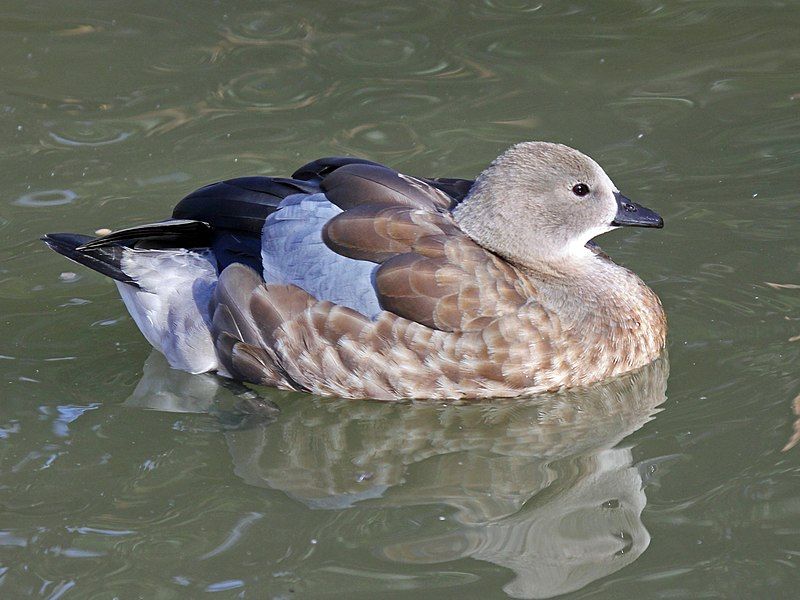
The blue-winged goose is a unique species of waterfowl native to the African country of Ethiopia. It is the only species of its kind that is found in this region and is the only member of the genus Cyanochen.
This species is quite rare and is currently listed as endangered due to habitat destruction, hunting, and other human-related activities. The blue-winged goose is a medium-sized waterfowl species that can reach up to 28 inches in length.
It has a striking plumage with a blue-gray head, neck, and breast, while the wings are bluish-black. The wings also have a white stripe running along the edges. The belly is white with dark barring, while the back is black or dark brown with white barring.
The bill is yellow-orange, and the legs are orange. Its diet consists of aquatic plants, small insects, and crustaceans. The blue-winged goose is a gregarious bird that can be found in small flocks, usually near bodies of water.
It breeds mainly in the rainy season, between March and June. The female lays and incubates a clutch of 4-6 eggs. The blue-winged goose is a beautiful species that is unique to Ethiopia and is in need of urgent conservation efforts if it is to survive.
| Kingdom | Animalia |
| Phylum | Chordata |
| Class | Aves |
| Order | Anseriformes |
| Family | Anatidae |
| Genus | Cyanochen |
| Species | C. cyanoptera |
2. Wattled Ibis
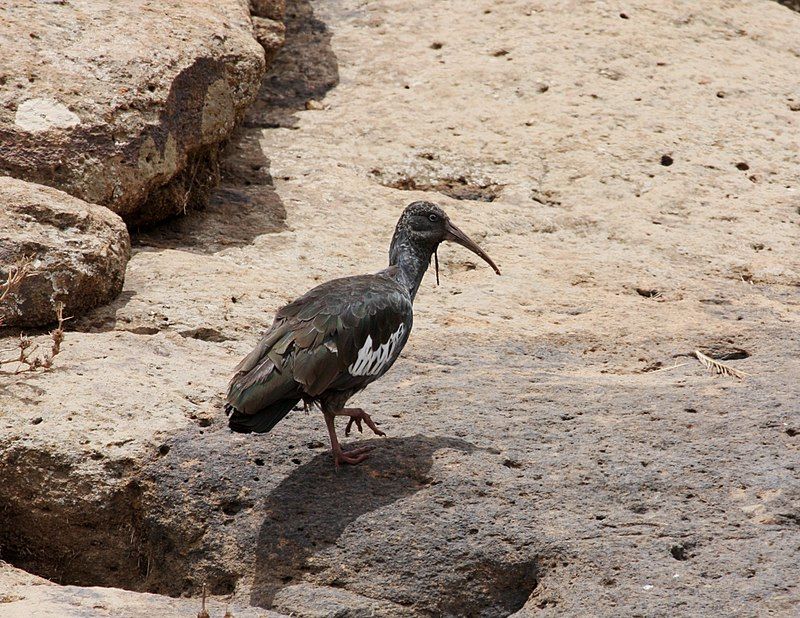
The wattled ibis is a species of bird that is part of the Threskiornithidae family. It is native to the Ethiopian highlands and is not found anywhere else in the world, making it an endemic species.
The wattled ibis can only be located in Ethiopia and Eritrea, both of which are located in the Horn of Africa. The wattled ibis is a fairly large bird, measuring around 60 cm in length and having a wingspan of up to 85 cm. It has a black head, neck, and chest, and a white belly.
Its wings and tail are greyish-brown and its bill is black and curved. The wattled ibis is primarily a grassland bird, feeding on insects, small reptiles, amphibians, and other small animals.
It builds its nests in the tall grass, which is constructed of twigs and lined with grass. It is usually found in small groups of up to 10 individuals. The wattled ibis is listed as Near Threatened by the IUCN Red List of threatened species.
It is threatened by habitat degradation and destruction due to human activities, as well as hunting and trapping for food. Conservation efforts are underway to try and protect the species and its habitat.
| Kingdom | Animalia |
| Phylum | Chordata |
| Class | Aves |
| Order | Pelecaniformes |
| Family | Threskiornithidae |
| Genus | Bostrychia |
| Species | B. carunculata |
3. Hornbills
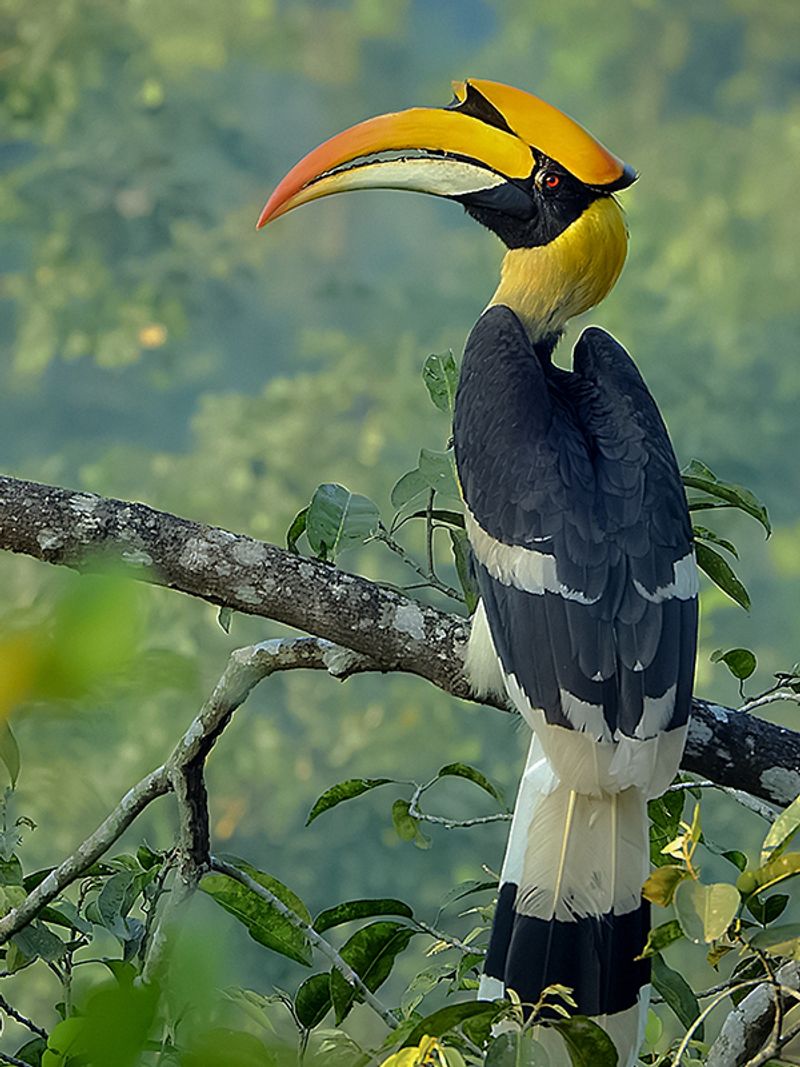
Hornbills are a unique family of birds that are found in different regions of the world including tropical and subtropical Africa, Asia, and Melanesia.
They are easily recognizable for their large, down-curved bills that are often brightly colored and sometimes feature a casque, which is a structure made of horn or bone, on the upper mandible.
Hornbills are usually quite large in size, and their bills are an adaptation that allows them to feed more efficiently on a variety of fruits, insects, and small animals. The brightly colored bills of hornbills are also believed to play a role in courtship behavior.
These birds are known to be very social creatures and often travel in large flocks. When looking for a mate, they will display their bill in an effort to attract potential partners.
The casque on the bills of some hornbills is thought to be an adaptation for extra protection while they are in flight, as they are often seen soaring through the sky in groups. Hornbills are also culturally important in many parts of the world.
They are often seen in traditional art and are mentioned in various myths and legends. Furthermore, the feathers of these birds are used to make headdresses and other ceremonial items.
In conclusion, hornbills are a fascinating species of bird with unique features and behaviors that have been admired for centuries. From their brightly colored bills to their casques, they are an important part of many cultures and ecosystems around the world.
| Kingdom | Animalia |
| Phylum | Chordata |
| Class | Aves |
| Order | Bucerotiformes |
| Family | Bucerotidae |
4. White-Collared Pigeon
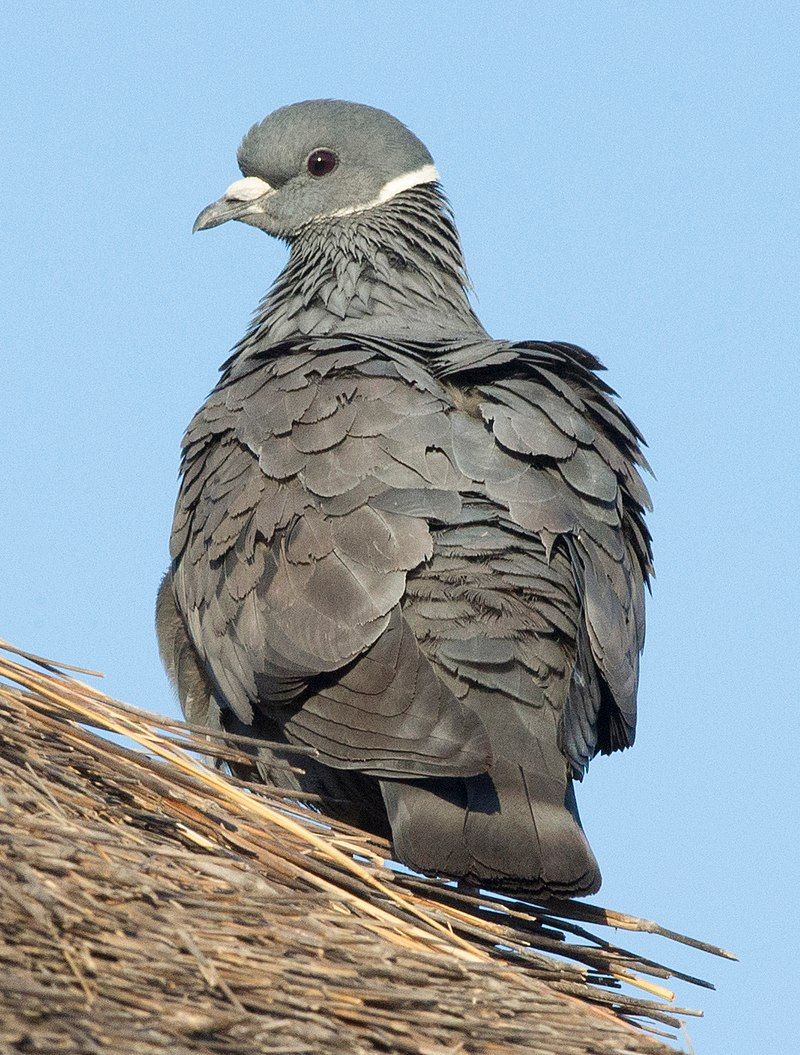
The white-collared pigeon is a type of bird that belongs to the Columbidae family. It is native to the mountainous regions of Ethiopia and Eritrea, where it inhabits areas with rocky cliffs and gorges near rural populations. However, it can also be seen in urban areas.
This species is unique and no subspecies have been identified. The white-collared pigeon is a medium-sized bird with a distinctive white patch around its neck. Its plumage is predominantly grey, but it can also have some brown coloring.
The bird feeds on various fruits and seeds, and it nests in tree cavities or rocky crevices. The white-collared pigeon is an important species to local communities, as it provides a source of food and helps to disperse seeds.
It is also a popular game bird and is valued by hunters in the region. The species is not currently threatened, but habitat loss and hunting pressure could become an issue in the future. As such, conservation efforts are needed to ensure the long-term survival of the species.
| Kingdom | Animalia |
| Phylum | Chordata |
| Class | Aves |
| Order | Columbiformes |
| Family | Columbidae |
| Genus | Columba |
| Species | C. albitorques |
5. African Sacred Ibis
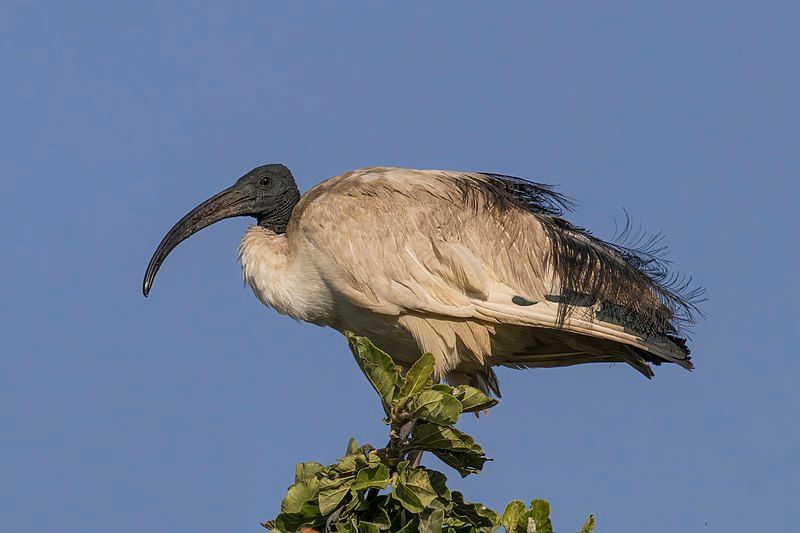
The African sacred ibis is a wading bird of the family Threskiornithidae, found throughout much of Africa, and also in some parts of Iraq, Iran, and Kuwait.
This species of ibis is an especially important one, as it has been linked to the god Thoth in the religion of Ancient Egyptians. The ibis is a fairly large bird, with a wingspan of about 1 m and a body length of up to 70 cm.
It has a blackish-green plumage, with a white head and neck, and a long, curved bill. Its long legs are greenish-yellow, and it has a bare patch of pink skin around its eyes. The African sacred ibis has long been held in high esteem in Ancient Egyptian religion.
It was associated with the god Thoth, who was the god of writing, wisdom, and learning.
The ibis was believed to be the messenger of the gods, and its feathers were often used in religious ceremonies and rituals. The ibis was also a symbol of purity and renewal and was often used in funerary rituals.
Its feathers were used to adorn the head of the deceased, and it was thought that the ibis’s wings would carry the mummified soul to the afterlife. The African sacred ibis is a fascinating species, and its long-standing importance in Ancient Egyptian religion is an important part of our understanding of the culture.
It is a species that is still present in much of Africa today, and it continues to be revered for its beauty and importance in the world of nature.
| Kingdom | Animalia |
| Phylum | Chordata |
| Class | Aves |
| Order | Pelecaniformes |
| Family | Threskiornithidae |
| Genus | Threskiornis |
| Species | T. aethiopicus |
6. African Grey Hornbill
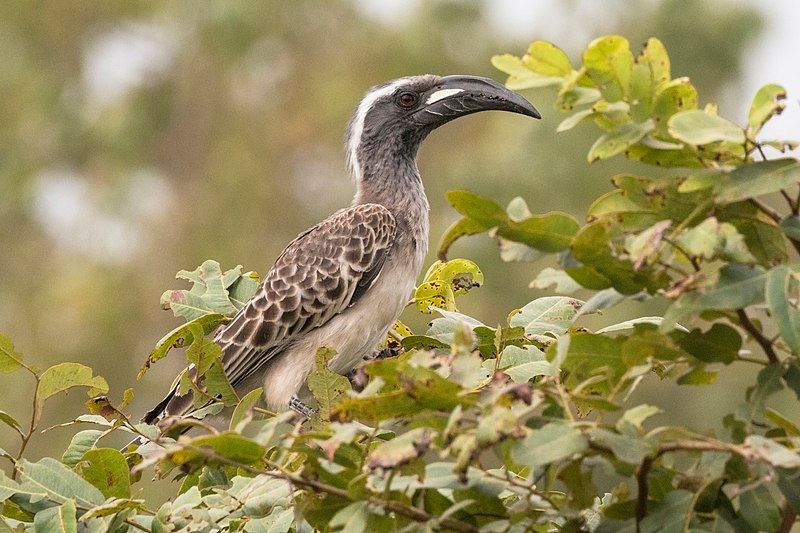
The African grey hornbill is a species of bird that belongs to the hornbill family. This family of birds is found mostly in tropical regions of the Old World, which includes parts of Africa and the Arabian Peninsula.
The African grey hornbill is a relatively widespread bird that lives in many areas of sub-Saharan Africa and the southwestern corner of the Arabian Peninsula. It is a resident breeder, meaning that it stays in the same area year-round and breeds there too.
This species of hornbill is mostly found in savannahs, woodlands, and forests, and feeds mainly on insects, fruit, and small animals. The African grey hornbill has a unique body shape, with a large, gray beak and a white face.
It also has a black back, wings, and tail, and a white chest and belly. The African grey hornbill is an important species in many African cultures and is highly valued for its beauty.
| Kingdom | Animalia |
| Phylum | Chordata |
| Class | Aves |
| Order | Bucerotiformes |
| Family | Bucerotidae |
| Genus | Lophoceros |
| Species | L. nasutus |
7. Thick-Billed Raven
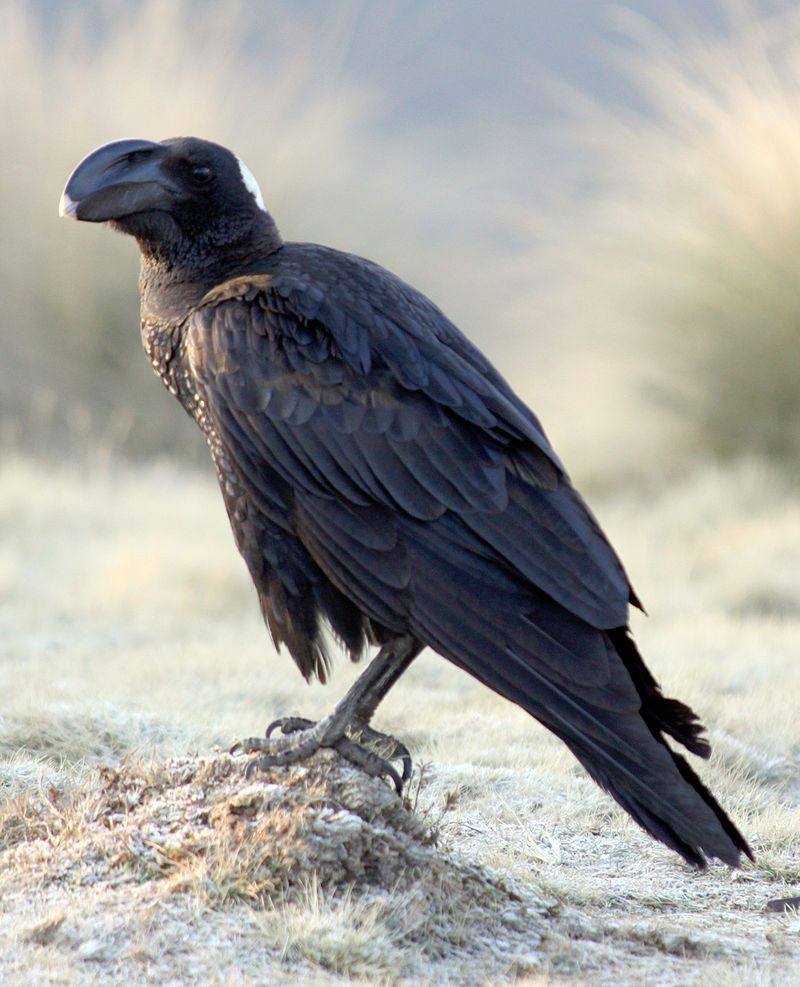
The thick-billed raven is a species of corvid, a family of birds known for their intelligence and social behavior, that is native to the Horn of Africa.
It is considered to be the largest bird in the corvid family, and indeed the largest of all passerines, which are a group of perching birds.
This species of raven is distinguished from the common raven by its thicker bill, which is mainly used for cracking open hard-shelled nuts and fruits.
Along with its size, the thick-billed raven can be distinguished by its short tail, and its chocolate brown body feathers that are glossy with a metallic sheen. It has a loud, rasping call that is similar to that of its close relative, the common raven.
It also has a wide variety of vocalizations, including croaks, caws, and whistles, and can mimic the calls of other birds. The thick-billed raven feeds on a variety of food sources, including insects, fruit, nuts, eggs, and carrion.
It is often seen in flocks and can form long-term partnerships with one another. In some regions, it is considered a pest species due to its habit of stealing crops such as corn and other grains.
| Kingdom | Animalia |
| Phylum | Chordata |
| Class | Aves |
| Order | Passeriformes |
| Family | Corvidae |
| Genus | Corvus |
| Species | C. crassirostris |
8. Abyssinian Catbird
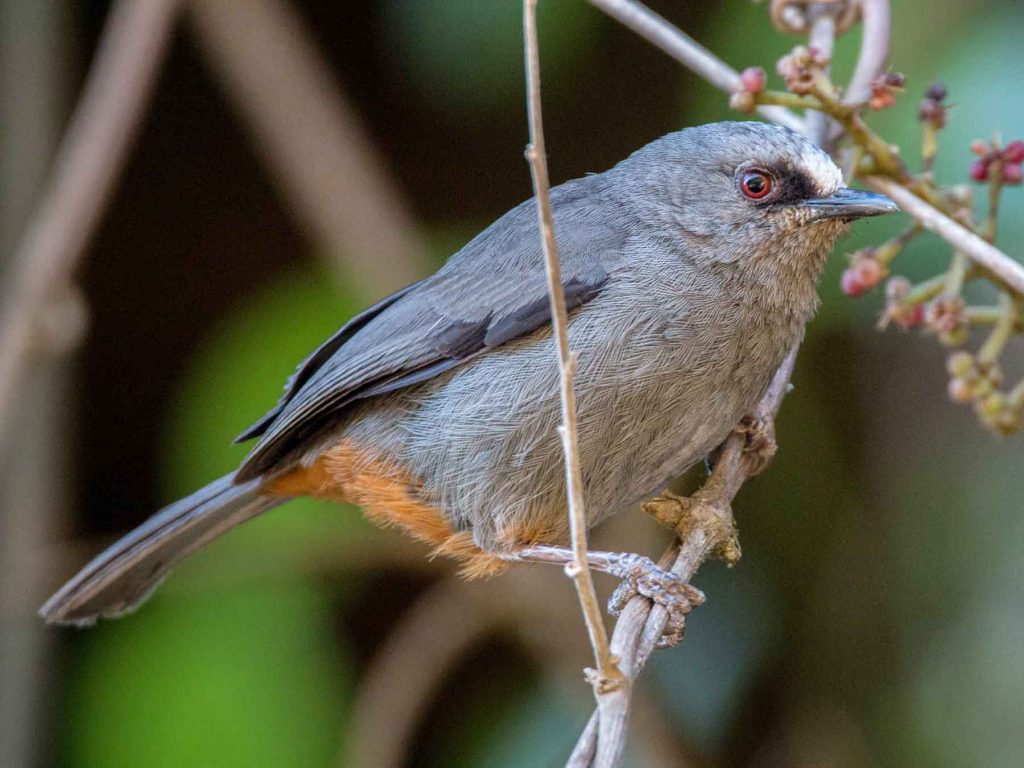
Source: ebird.org
The Abyssinian catbird, also known as the juniper babbler, is a species of bird found in the family Sylviidae. It is native to Ethiopia, where it is found in the highland forests and scrublands of the country.
This species of bird is quite small and has a mostly grey body, with black lores, a whitish forehead, and a chestnut vent. Its wings are short and its tail is fairly long. This bird typically forages on the ground for its food, such as insects and seeds.
It is also known to nest in dense foliage or in low trees. The Abyssinian catbird is a fairly common species in its native range and is not considered threatened or vulnerable.
| Kingdom | Animalia |
| Phylum | Chordata |
| Class | Aves |
| Order | Passeriformes |
| Family | Sylviidae |
| Genus | Sylvia |
| Species | S. galinieri |
9. Black-Winged Lovebird
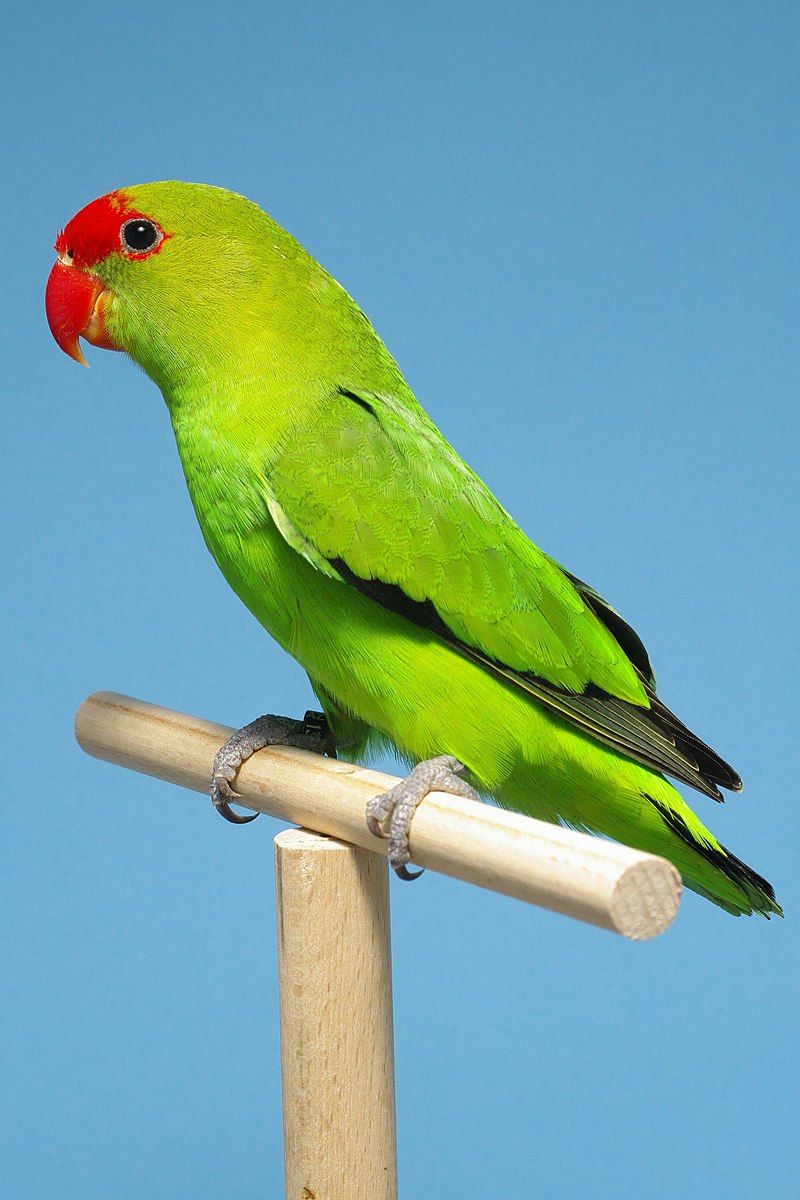
The black-winged lovebird, also known as the Abyssinian lovebird, is a species of parrot known for its striking green color. It is the largest of the lovebird genus, which is a group of small parrots, measuring about 16.5 cm long.
The adult male of this species is easily identifiable by its red forehead, while the adult female has an all-green head. The Abyssinian lovebird can be found in dry, open scrublands and savannas, often near water sources.
It is a sociable bird and can be seen in small groups of up to 15 individuals. It feeds mainly on seeds, fruits, and flowers and can be seen foraging on the ground. They are also known to nest in cavities in trees and rocks.
The black-winged lovebird is quite uncommon in the wild, but it is widely kept as a pet due to its beautiful plumage and gentle demeanor.
| Kingdom | Animalia |
| Phylum | Chordata |
| Class | Aves |
| Order | Psittaciformes |
| Family | Psittaculidae |
| Genus | Agapornis |
| Species | A. taranta |
10. Abyssinian Longclaw
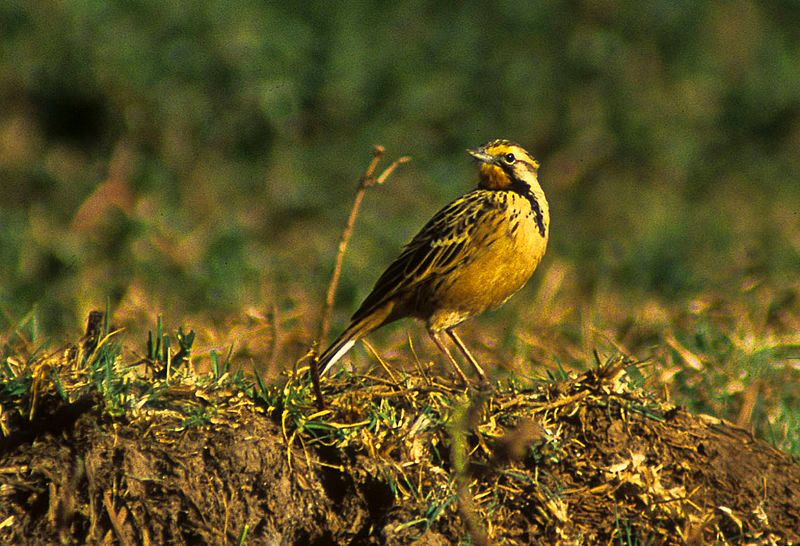
The Abyssinian longclaw is a species of small bird found in Ethiopia. It is part of the family Motacillidae, which includes a wide range of bird species such as pipits and wagtails.
This species of bird is endemic to Ethiopia, meaning that it is only found in this particular region of the world. The Abyssinian longclaw is a medium-sized bird, with a rounded body and a long, thin beak. Its wings are brown, and its head and chest are a pale yellow color.
It has a white line running along its throat and a white patch on its rump. The bird has a long tail with black and white barring, which it uses for balance when it is in flight. The Abyssinian longclaw is a sociable bird, often living in small flocks.
It feeds mainly on insects, although it will occasionally eat small fruits and seeds. It is a threatened species due to loss of habitat, and its numbers are declining.
| Kingdom | Animalia |
| Phylum | Chordata |
| Class | Aves |
| Order | Passeriformes |
| Family | Motacillidae |
| Genus | Macronyx |
| Species | M. flavicollis |
11. Ethiopian Oriole
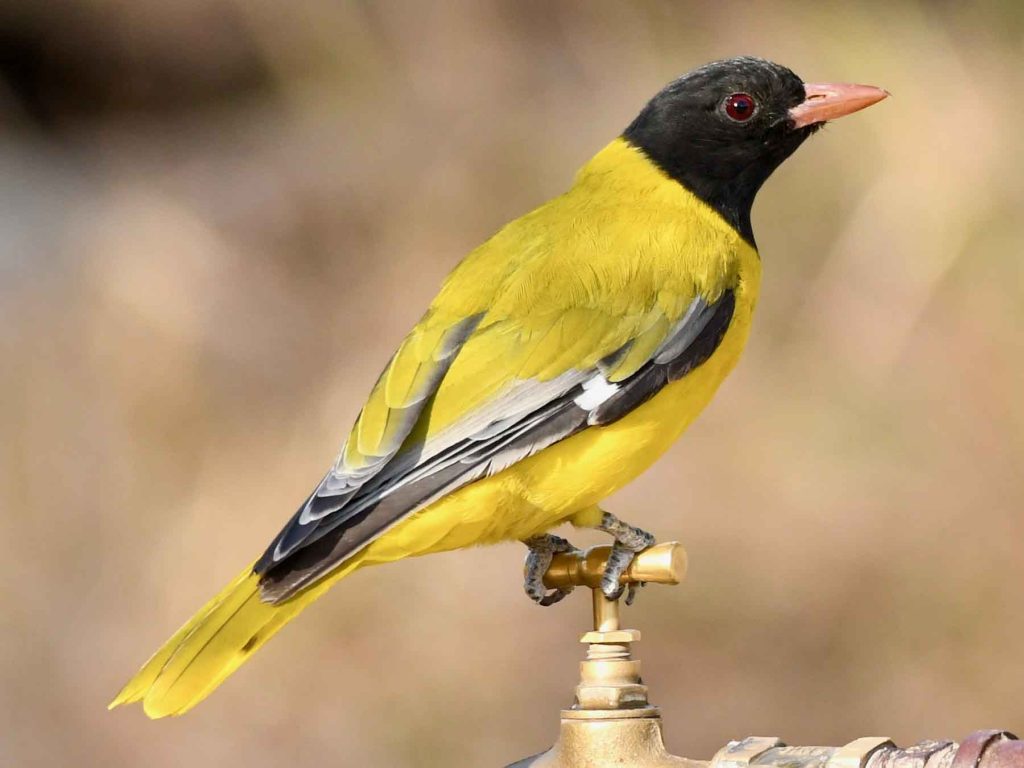
Source: ebird.org
The Ethiopian oriole is a species of bird that belongs to the family of Oriolidae. It is native to northeastern Africa and is typically seen in subtropical or tropical dry forests. This species of bird is renowned for its striking plumage of black and yellow feathers.
It has a distinctive black mask which is bordered by a bright yellow face and a bright yellow breast. The back of the Ethiopian oriole is black and its belly is light yellow. Its wings are black and white with white primary feathers and yellow secondary feathers.
Its tail is black with yellow edges. It is a medium-sized bird, measuring between 15 and 17 centimeters in length. The Ethiopian oriole has a varied diet, which mainly consists of insects and fruit. Its diet also includes small birds, reptiles, and other small animals.
The bird is mainly active during the day but may become more active at dusk and dawn. It is often seen perched on treetops, searching for food. The Ethiopian oriole is a solitary bird and only forms pairs during the breeding season.
It builds its nest in the canopy of a tree and lays a clutch of two to four eggs. The female incubates the eggs for about two weeks before they hatch.
Both parents help to feed and care for the chicks until they are old enough to leave the nest. The Ethiopian oriole is listed as a species of least concern by the International Union for Conservation of Nature (IUCN).
This is due to its widespread range and population size, which is estimated to be stable. However, the species is still vulnerable to habitat loss due to deforestation.
Therefore, it is important to protect the natural habitat of the Ethiopian oriole in order to ensure its continued survival.
| Kingdom | Animalia |
| Phylum | Chordata |
| Class | Aves |
| Order | Passeriformes |
| Family | Oriolidae |
| Genus | Oriolus |
| Species | O. monacha |
12. Abyssinian Woodpecker
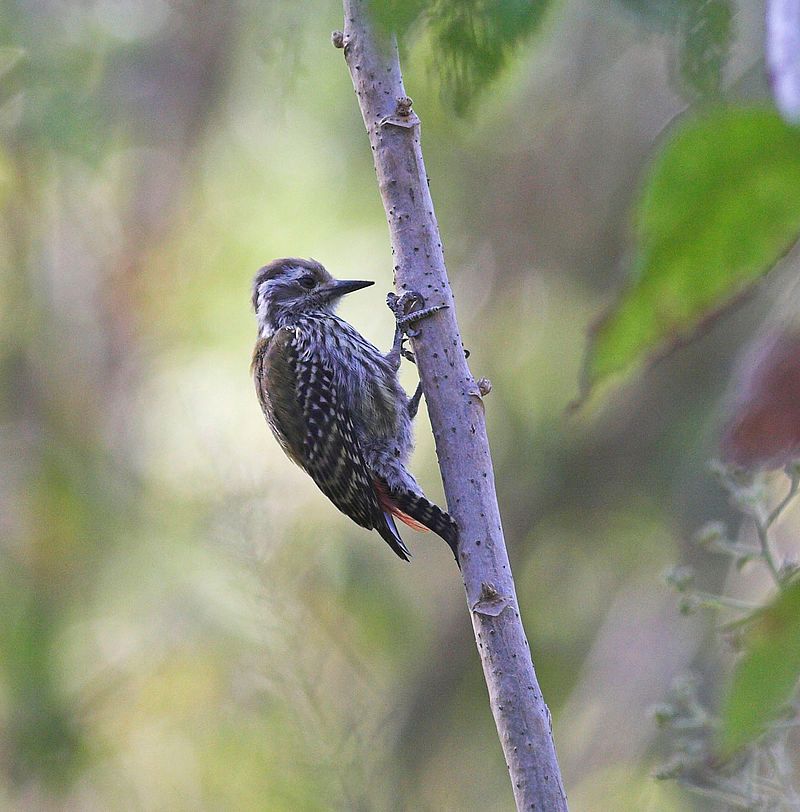
The Abyssinian woodpecker is a species of bird in the woodpecker family, Picidae. It is native to Africa, specifically Eritrea and Ethiopia, and is closely related to the cardinal woodpecker Dendropicos fuscescens.
This species of woodpecker is sometimes referred to as the golden-backed woodpecker or the golden-mantled woodpecker due to its distinctive yellow feathers on its back and mantle. The Abyssinian woodpecker is a medium-sized bird, with a length of approximately 18-20 cm.
It has a black head and neck, with white wing patches. The back and wings of the bird are a golden-yellow color, while the tail is black with white outer feathers. Its bill is long and curved, and its legs are short and yellow in color.
The Abyssinian woodpecker is mainly found in the wooded savannahs and dry woodlands of Eritrea and Ethiopia. It feeds on insects and other invertebrates which it finds by tapping on the trunks of trees with its bill. It also occasionally feeds on fruits and berries.
The species is threatened by habitat loss due to deforestation and hunting. As a result, the Abyssinian woodpecker is considered to be near threatened by the IUCN Red List of Threatened Species.
| Kingdom | Animalia |
| Phylum | Chordata |
| Class | Aves |
| Order | Piciformes |
| Family | Picidae |
| Genus | Dendropicos |
| Species | D. abyssinicus |
13. Spot-Breasted Lapwing
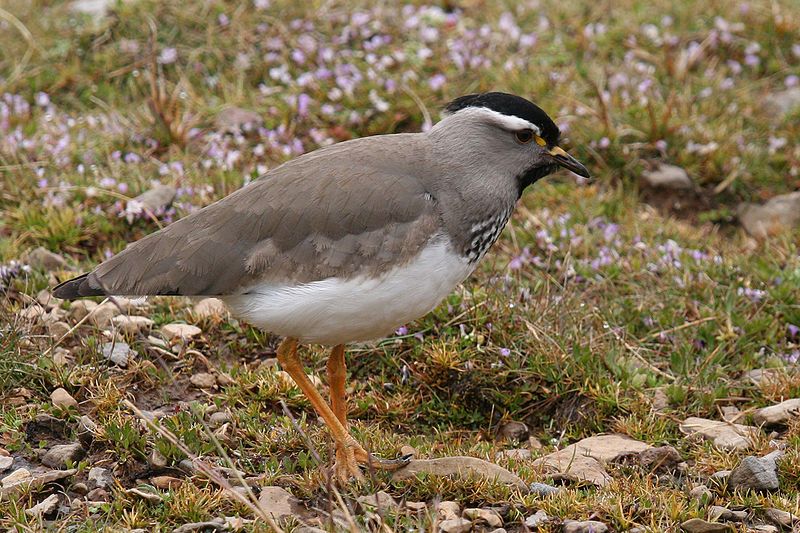
The spot-breasted lapwing is a species of bird found in the family Charadriidae. It is unique to the Ethiopian highlands, meaning it is not found anywhere else in the world.
It has a “chunky” build, with a black cap, white eyebrow, black throat, and distinctive spots across its breast. This species of lapwing has adapted to the Ethiopian highlands, where it lives and thrives.
It is an important part of the local ecosystem, providing food for predators, and also playing a role in pollinating nearby plants. Spot-breasted lapwings are also important to the local culture, as they have been used in traditional songs, dances, and art.
These birds are an important part of the Ethiopian highland region and are a vital part of the local ecosystem.
| Kingdom | Animalia |
| Phylum | Chordata |
| Class | Aves |
| Order | Charadriiformes |
| Family | Charadriidae |
| Genus | Vanellus |
| Species | V. melanocephalus |
14. Prince Ruspoli’s Turaco
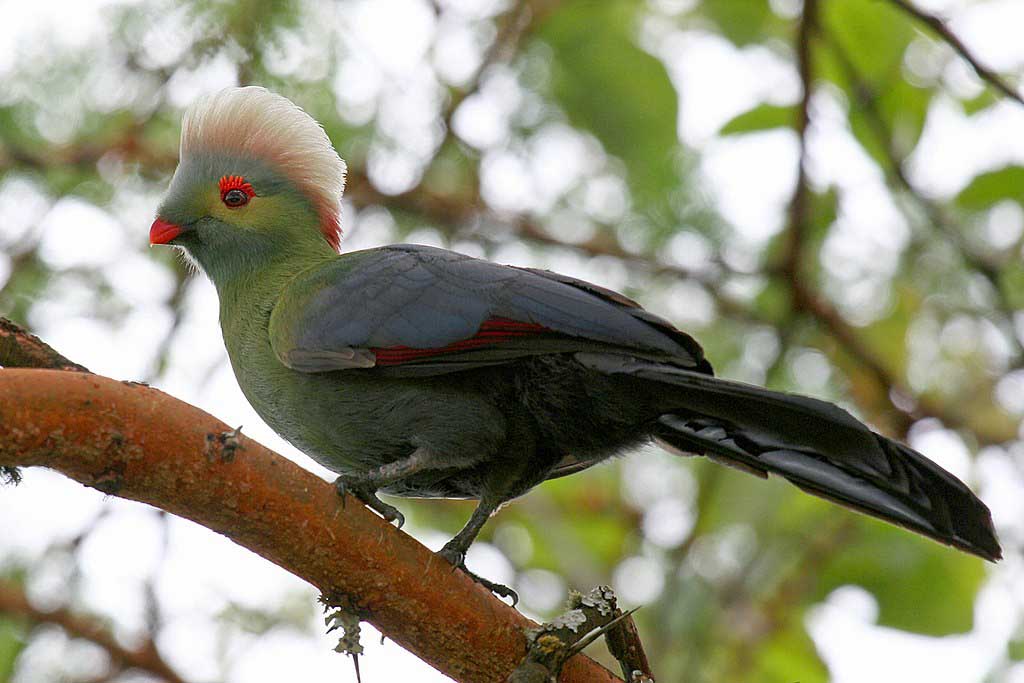
Source: Wikipedia
Prince Ruspoli’s turaco is a species of bird that is part of the Musophagidae family. This bird is endemic to the southern region of Ethiopia and it inhabits subtropical or tropical dry forests. Unfortunately, its natural habitat is threatened by habitat loss.
As a result, Prince Ruspoli’s turaco is becoming scarce and is listed as a vulnerable species. The bird’s main threats come from the conversion of its natural habitat for agriculture and other human activities.
The destruction of forests affects the bird’s ability to find food and shelter, as well as its ability to reproduce. In addition, the bird faces threats from hunting, trapping, and capture for the pet trade.
All of these threats pose a serious risk to the survival of the species. In order to protect Prince Ruspoli’s turaco, conservation efforts need to be put in place.
For example, more protected areas could be established and stricter regulations could be implemented to prevent hunting and trapping. In addition, reforestation and habitat restoration could help create new suitable habitats for the species.
By taking action now, it is possible to ensure the future of Prince Ruspoli’s turaco.
| Kingdom | Animalia |
| Phylum | Chordata |
| Class | Aves |
| Order | Musophagiformes |
| Family | Musophagidae |
| Genus | Menelikornis |
| Species | M. ruspolii |
15. White-Backed Black Tit
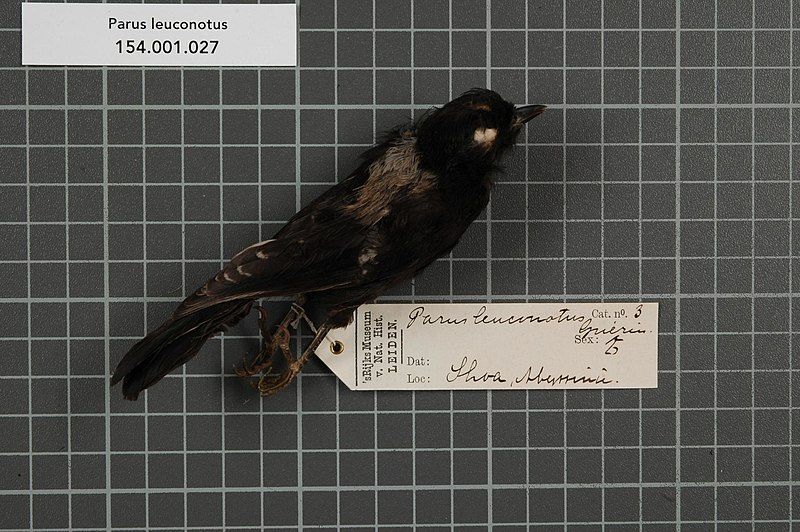
The white-backed black tit is a species of bird belonging to the family Paridae. It is found in two countries in Africa, Eritrea, and Ethiopia, and is typically found in boreal forests. The tit is small, with a black body and a white back and wings.
It is most active at dawn and dusk, and can often be found in small flocks. The diet of the white-backed black tit consists mainly of insects, seeds, and berries. They are also known to eat nectar and sap from trees.
The white-backed black tit is an important species to its ecosystems, as it helps to keep insect populations in check and disperses seeds.
The tit is also an important species for birdwatchers and ornithologists, as it is a relatively rare species in its range and is always a welcome sight.
| Kingdom | Animalia |
| Phylum | Chordata |
| Class | Aves |
| Order | Passeriformes |
| Family | Paridae |
| Genus | Melaniparus |
| Species | M. leuconotus |
16. White-Winged Cliff Chat
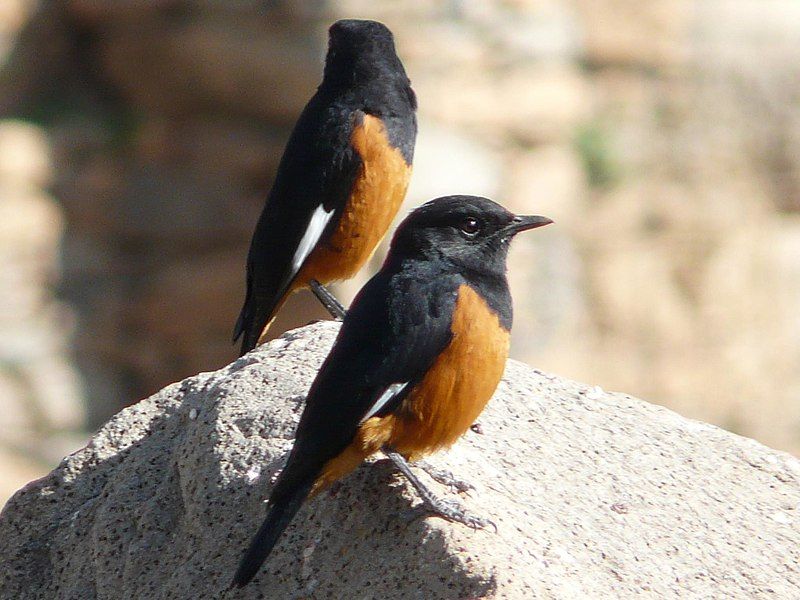
The white-winged cliff chat is a species of bird from the Old World flycatcher family, known as Muscicapidae. It is a passerine bird, which is a type of perching bird.
This particular species is found in the Ethiopian Highlands, where it inhabits rocky wooded gorges, as well as boulder-strewn areas and road cuttings. The white-winged cliff chat is an elusive bird that is difficult to observe.
It is usually found in large flocks, though they tend to move around frequently. This bird species is known for its distinctive white wings, which it uses to blend in with its rocky habitat.
The white-winged cliff chat is an important species in the Ethiopian Highlands, and it helps to maintain the ecological balance in the region.
| Kingdom | Animalia |
| Phylum | Chordata |
| Class | Aves |
| Order | Passeriformes |
| Family | Muscicapidae |
| Genus | Monticola |
| Species | M. semirufus |
17. Yellow-Fronted Parrot
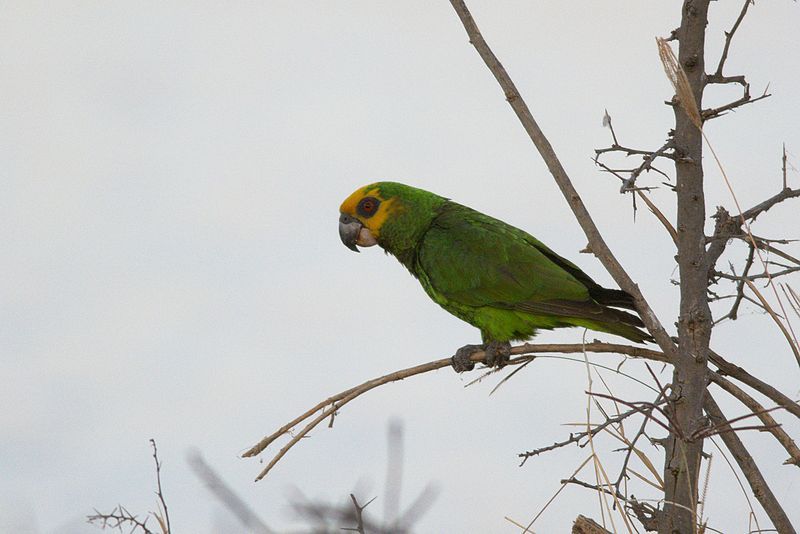
The yellow-fronted parrot is a species of parrot that is native to the Ethiopian Highlands. It is primarily green in color with a yellow head, making it easily recognizable. This parrot is not often seen in the wild, so relatively little is known about its habits and behavior.
It is thought to be an omnivorous species, with a diet of both fruits and insects. It is a social species and is often seen in pairs or small family groups. It is believed to make its home in the treetops of the highland forests.
It has a low population, meaning it is classified as Vulnerable by the IUCN. Conservation efforts are being made to help protect this species and its habitat in the Ethiopian Highlands.
| Kingdom | Animalia |
| Phylum | Chordata |
| Class | Aves |
| Order | Psittaciformes |
| Family | Psittacidae |
| Genus | Poicephalus |
| Species | P. flavifrons |
18. White-Tailed Swallow
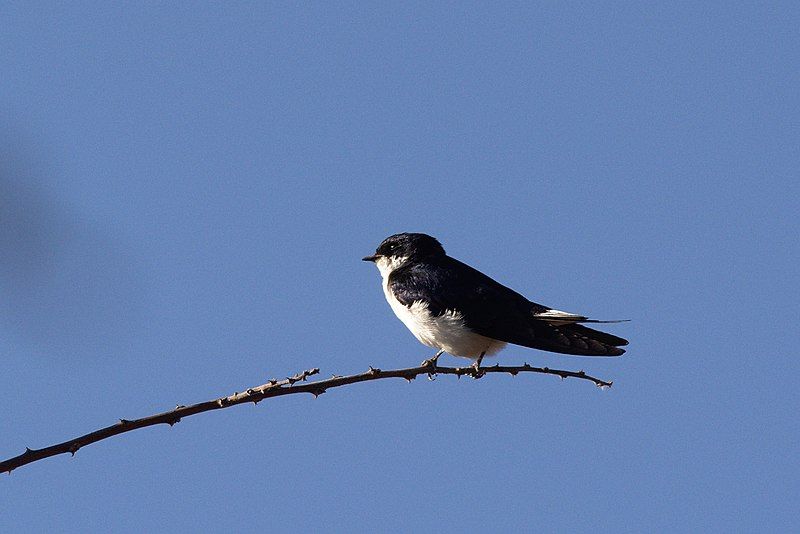
The white-tailed swallow is a small bird that is part of the Hirundinidae family, meaning it is a type of swallow. It is found exclusively in Oromia, Ethiopia, and is named after the ornithologist Constantine Walter Benson.
Benson was the one who identified the species and named it, so it has come to be known as “Benson’s swallow” in his honor. The swallow has a distinctive white tail, which makes it easily recognizable. It is primarily insectivorous and usually feeds on flying insects.
It is a migratory bird, which is why it is found in Ethiopia at certain times of the year. Its typical habitat is in open woodlands, fields, and grasslands, and it is particularly common in areas of Oromia where there is plenty of vegetation.
It is not currently listed as an endangered species, but its population is declining due to habitat loss and other human-related activities.
Conservation efforts are being made to protect the white-tailed swallow and its habitat so that it can continue to thrive in Oromia, Ethiopia.
| Kingdom | Animalia |
| Phylum | Chordata |
| Class | Aves |
| Order | Passeriformes |
| Family | Hirundinidae |
| Genus | Hirundo |
| Species | H. megaensis |
19. Somali Ostrich
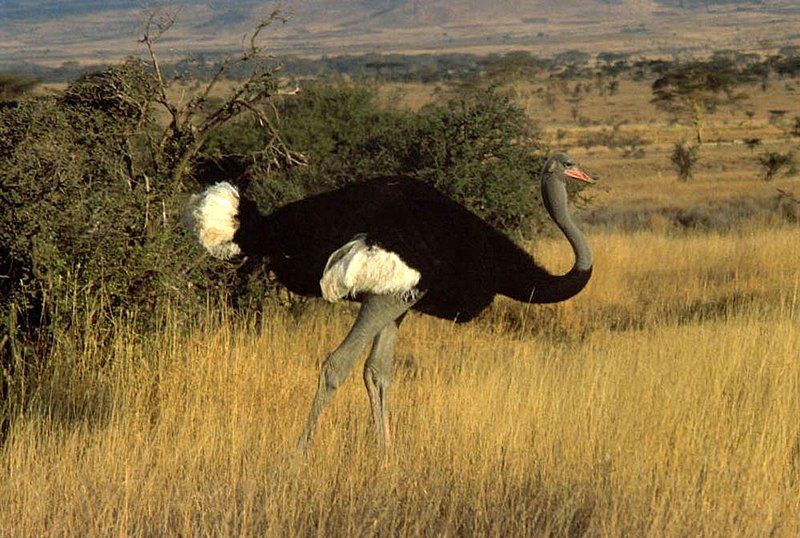
The Somali ostrich is a large, flightless bird native to the Horn of Africa. It is one of two species of ostriches, the other being the common ostrich.
Until 2014, the Somali ostrich was thought to be a subspecies of the common ostrich; however, it was officially identified as a distinct species that year.
This species is also known as the blue-necked ostrich due to the color of its neck feathers. The Somali ostrich has many unique characteristics which differentiate it from the common ostrich.
For example, the Somali ostrich has a more slender neck and legs than the common ostrich, and its wings are smaller in proportion to its body size. Additionally, its feathers are a bluish-gray color while the common ostrich’s feathers are a more reddish-brown hue.
The Somali ostrich is also slightly smaller than the common ostrich, with a height of up to nine feet and a weight of up to 250 pounds. The habitat of the Somali ostrich is mainly dry grasslands and open savannas, and it is an important part of the local ecosystem.
As a grazing bird, it helps to keep grasslands healthy by eating plants and dispersing seeds.
It also serves as an important source of food for local predators, including cheetah, leopards, and hyenas. The Somali ostrich is currently listed as endangered due to habitat loss and hunting.
Conservation efforts are ongoing in order to protect this unique species and ensure its future survival.
| Kingdom | Animalia |
| Phylum | Chordata |
| Class | Aves |
| Order | Struthioniformes |
| Family | Struthionidae |
| Genus | Struthio |
| Species | S. molybdophanes |
20. Helmeted Guineafowl
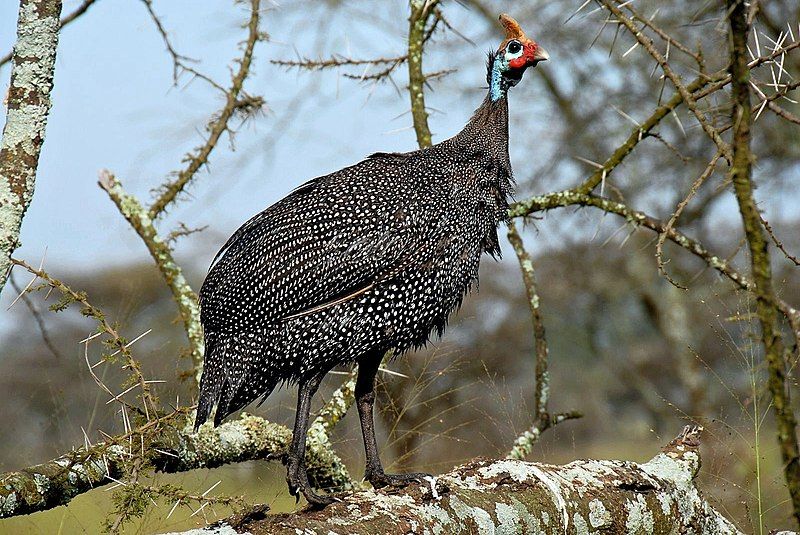
The helmeted guineafowl is a species of bird found in the Numididae family and is the only member of the genus Numida. It is native to Africa, mainly south of the Sahara, and has been widely introduced to other parts of the world by humans.
For example, it has been domesticated and can now be found in the West Indies, North America, Colombia, Brazil, Australia and Europe. The helmeted guineafowl is the most well-known species of the guineafowl family and is easily recognisable due to its distinct helmet-like crest of feathers.
It is typically found in open grasslands and savannahs, and is an omnivorous species, foraging for a variety of food sources such as small mammals, insects, seeds, and berries.
They are usually seen in small flocks, typically of about 10-20 birds that communicate and keep in touch with each other using a variety of calls. The helmeted guineafowl is a highly social species, and pairs of birds are often seen interacting with each other in courtship rituals.
They are also known to be very vocal, with both sexes making a variety of loud calls.
The female is also known to be the more aggressive of the two, often chasing away intruders or potential predators. The helmeted guineafowl is an important species in many African cultures and is often seen as a symbol of good luck or prosperity.
It is also an important source of food for both humans and other animals, making it a valuable member of the African ecosystem.
| Kingdom | Animalia |
| Phylum | Chordata |
| Class | Aves |
| Order | Galliformes |
| Family | Numididae |
| Genus | Numida |
| Species | N. meleagris |
21. Abyssinian Slaty Flycatcher
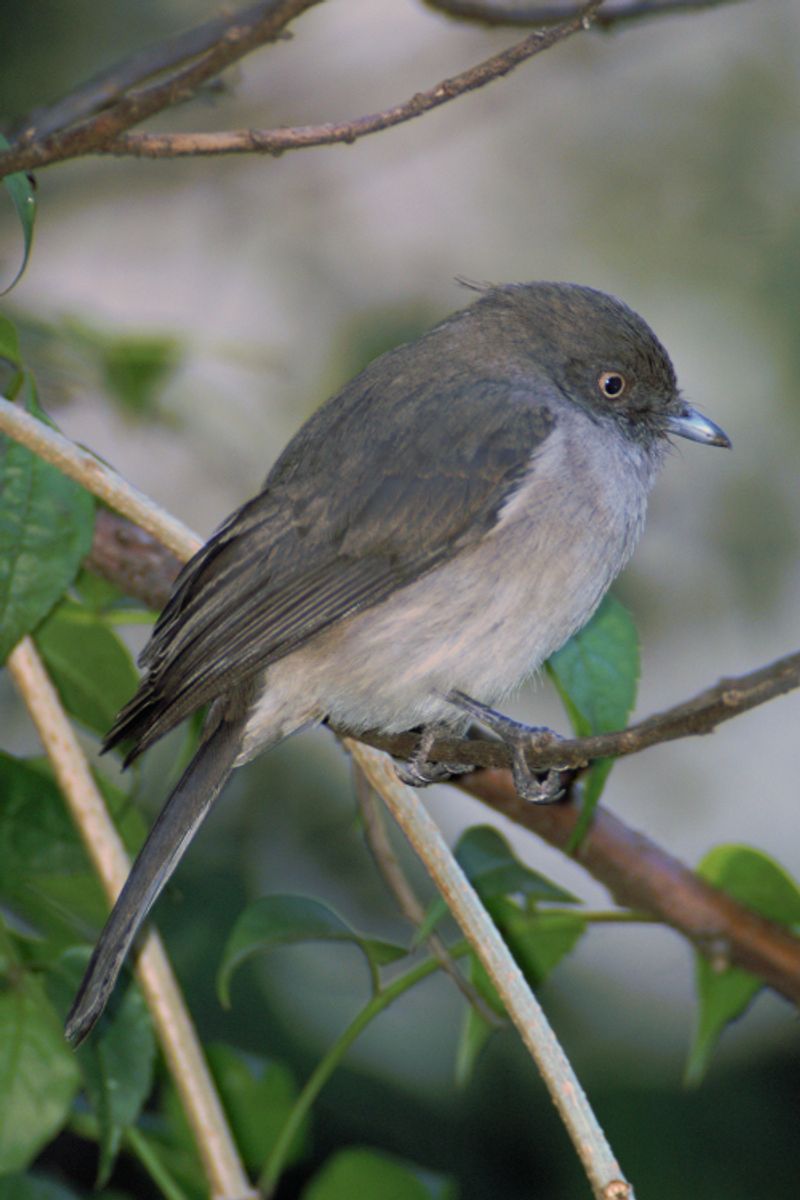
The Abyssinian slaty flycatcher is a unique species of bird found in Africa. It is a member of the Muscicapidae family, which is also referred to as the Old World flycatchers. This species is most commonly placed in the genus Dioptrornis.
The species is native to the countries of Eritrea and Ethiopia, located in the continent of Africa. The Abyssinian slaty flycatcher is also known by several other names, including the Abyssinian flycatcher, Abyssinian black flycatcher, and Abyssinian chocolate flycatcher.
This species of bird is characterized by its unique colouration, which is typically a slaty black or grey and brownish-black colour.
It also has a distinctive white spot located on the forehead, which is used as a form of identification. The Abyssinian slaty flycatcher can be found in a variety of habitats, including forest, woodland, open scrub, and grassland.
They feed mainly on insects, as well as some fruits and berries. This species is not considered to be endangered, however, its population is believed to be in decline due to habitat loss.
The IUCN Red List of Threatened Species has listed the Abyssinian slaty flycatcher as a species of least concern.
| Kingdom | Animalia |
| Phylum | Chordata |
| Class | Aves |
| Order | Passeriformes |
| Family | Muscicapidae |
| Genus | Melaenornis |
| Species | M. chocolatinus |
22. Lilac-Breasted Roller
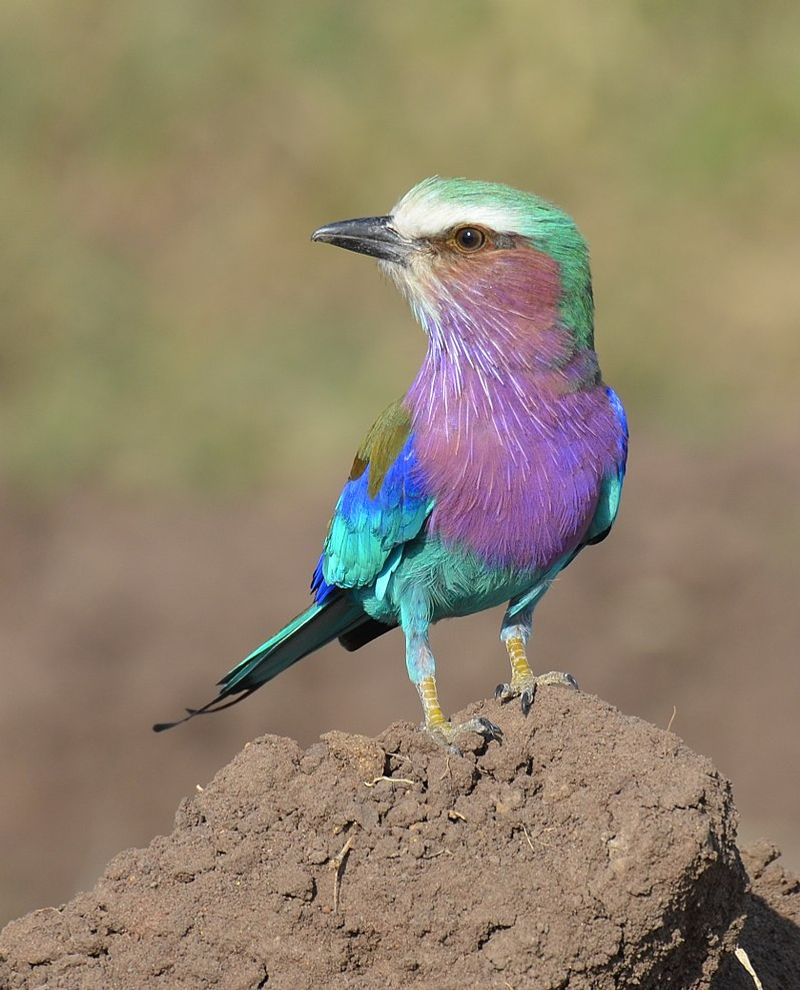
The lilac-breasted roller is a beautiful bird found in Africa, belonging to the roller family, Coraciidae. Its range stretches across much of southern and eastern Africa, as well as in the occasional vagrant to the southern Arabian Peninsula.
This bird is typically found in open woodlands and savannas, and it is very rarely spotted in treeless places. This bird is easily recognizable by its striking coloring, with its bright blue-green upperparts, lilac breast, and violet-blue belly.
It also has a long tail, red eyes, and a black bill. It feeds mainly on insects, which it hunts by either swooping down from a perch or hovering in the air.
The lilac-breasted roller is a fairly common bird in its range and is listed as least concern by the International Union for Conservation of Nature.
Despite this, its population is decreasing due to habitat destruction, hunting, and the capture of younger birds for the pet trade. Conservation efforts have been made in recent years to help protect this species and ensure that its population remains healthy.
| Kingdom | Animalia |
| Phylum | Chordata |
| Class | Aves |
| Order | Coraciiformes |
| Family | Coraciidae |
| Genus | Coracias |
| Species | C. caudatus |
Conclusion
Addis Ababa is home to a wide variety of bird species, providing an incredible opportunity for birdwatchers and nature enthusiasts alike. With its diverse habitats and unique bird species, Addis Ababa is a great place to observe and learn about birds.
The city is also home to a number of conservation programs that help protect the birds and their habitats, ensuring that birdwatching remains a memorable experience for all.